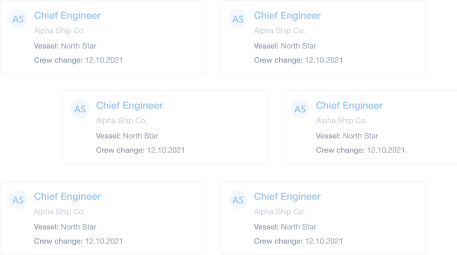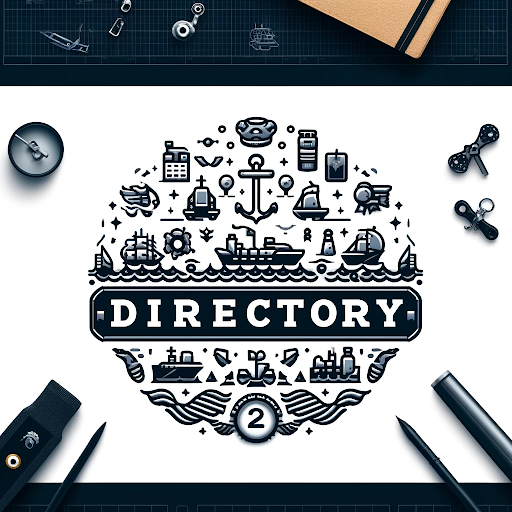What is a Data Gap & How Can a Crewing System Close It?

At Martide it’s no secret that we love technology - after all our applicant tracking crewing system, tools for collaboration and crew management solution have helped multiple prominent shipping companies simplify their maritime recruitment efforts.
And we’re committed to using that passion, and our knowledge, to help power the maritime industry forward.
We’re strong believers that technology should make life easier for those who use it, eliminating repetitive and mundane tasks and allowing you to focus on what you’re really good at and what you love to do. The kind of things you started your business or joined your company for.
And if you have the sneaking suspicion that there are areas of your business that could be improved upon - for example your maritime recruitment processes or your crew planning methods - then it could be down to a data gap.
But what is a data gap? At its very simplest, a data gap is exactly what it sounds like: it is a gap in your organization’s data. Something is not connecting in the way it should connect, leaving your business unable to fulfill its full potential.
What is a data gap and how can a crewing system close it?
But before you start panicking, you need to determine if you actually have a data gap in the first place.
It could be that everything is running at peak performance and all your crewing systems, seafarer profiles, maritime recruitment efforts, crew management tactics, and software tools are working as one cohesive whole.
Read more: How to Ensure Your Employees Adopt Your Crewing SystemIf that’s the case - that’s absolutely fantastic! But if there are areas you know you could improve upon, then it could be well worth your time to run a data gap analysis.
What is data gap analysis?
Gap analysis is something that compares the expected outcome of something with the actual results.
For example, maybe you expected to be able to fill a certain number of vacant crew positions within a certain timeframe but came up short. That would indicate that there is a gap in your maritime recruitment strategy.
And that gap needs closing.
Once you’ve compared your target outcome with the actual results, you can then explore ways to close the gap between them so that you are in a better position to meet your goals.
You can use data gap analysis to examine your company as a whole, different departments and teams, and even individual employees.
How to perform data gap analysis
Performing gap analysis doesn’t have to be...well, a performance.
It doesn’t have to result in major upheaval and you could find the answer to your under performing areas or teams is something as simple as tweaking a few processes, working more closely with a certain employee, or implementing a new software solution, such as a crewing system.
The steps below will help put you on the right path to running a tighter ship. (Pun intended!)
- Identify the team, area or process that you wish to analyze
- Identify the results or outcome you wish to achieve
- Analyze the present results or outcome
- Compare the present outcome with the ideal outcome
- Look at the gap and assess the difference
- Consider how to solve the problem to close the gap
- Implement the solution to the problem and monitor results
How technology helps close the data gap
It is quite possible that any gaps you identify lie somewhere between two of the most valuable assets of any business – people and information.
At Martide we’ve embraced the new wave of technology-driven change that impacts these assets in order to help them work more cohesively.
For example, a software solution such as a crewing system will enable you to extract the maximum value from your data, manage your crew more effectively and thus allow you to keep pace with and, ideally, outperform your competition.
It’s well known and often said that people are the backbone of any organization. Without them you’d be lost. But the problem in the maritime industry is that you’re not just managing the employees who are working in your shore based maritime jobs
You’re also managing your various crews. And your seafarers and contractors are often isolated. So how do you bring these valuable assets closer together to gain the maximum advantage from them?
In the maritime industry technologies such as crewing systems, crew management and maritime recruitment platforms can have a huge impact in terms of empowering seafarers and connecting them with the rest of the organization.
For example, Martide’s mobile app for seafarers not only helps seamen and women find jobs and enables you fill your vacancies more quickly and easily, it also bridges the disconnect by making it simpler for you and your candidates and hires to stay in touch.
Maritime recruitment and crewing software can also help you find the best people for your crew and allow you to manage them far more efficiently and cost-effectively. No matter where in the world you both are.
Technology is also a force for change: it can be harnessed to help you work more efficiently by eliminating reams of paperwork, predicting ETAs, ensuring there are no breaches in safety and security, and improving and modernizing training for seafarers.
Facing up to your maritime recruitment challenges
Stop for a moment and think about what the biggest challenges that your organization needs to overcome are in order to close your data gap or gaps.
For example, is your data scattered across a confusing mass of tools and programs and even filing cabinets? Is it hard to keep track of who has access to what information? Is the information flow in your business less of a flow and more of a stagnant puddle?
Email, integrated management systems (IMS), and customer relationship management (CRM) systems changed how we communicate, collaborate, and share information some time ago.
And now Artificial Intelligence, RFID and disruptive tech such as drones and blockchain are bringing workplaces and industries right into the 21st century.
Applicant tracking and crewing systems for easy collaboration
Martide provides a Software as a Service (SaaS) solution that eliminates the headaches associated with crew management and maritime recruitment. Our platform connects manning agents, shipping companies and seafarers all in one user friendly place.
Why spend time and money using multiple systems when you can do it all here?
Read more: What is a Crewing System & Why Does Your Maritime Recruitment Strategy Need One?
From job adverts that target qualified seafarers to an applicant tracking and crewing system to interview management - we have you covered.
We make maritime recruitment and crew management easier
Our aim is to make your workflow easier, and to make managing interactions between people simpler. After all, it shouldn’t be hard to talk - especially in these times of ultra connectivity!
We believe that processes should be easy, efficient and transparent. Particularly in the shipping industry where so many different parties are involved (and so much money is at stake!)
Built for the small to medium sized shipowner
Martide is a cloud-based crewing system built to empower and support the small and medium sized ship owner or manager through all stages of the marine recruitment process.
Our main focus is on building user friendly software that people actually want to use, and we cover all crewing processes from candidate selection to mobilization and reporting - something that will come in handy next time you’re running a gap analysis!
We offer a web-based application that requires no up-front investment and no installation yet all the functionality and benefits you expect from a fully integrated crewing system.
Onboarding is easy - something our clients who are established vessel owners, ship-management companies, and manning agencies love!
If this sounds interesting and you’d like to find out more about how we can help your shipping company close the data gap and open up a world of possibilities when it comes to streamlining your business, get in touch with us today.
This post was originally published on June 10th 2019 and updated on April 9th 2020.

Eve Church
Eve is Martide's content writer, publishing regular posts on everything from our maritime recruitment and crew planning software to life at sea. Eve has been writing professionally for more than two decades, crafting everything from SEO-focused blog posts and website landing pages to magazine articles and corporate whitepapers.
UK

is the only site for maritime jobs



